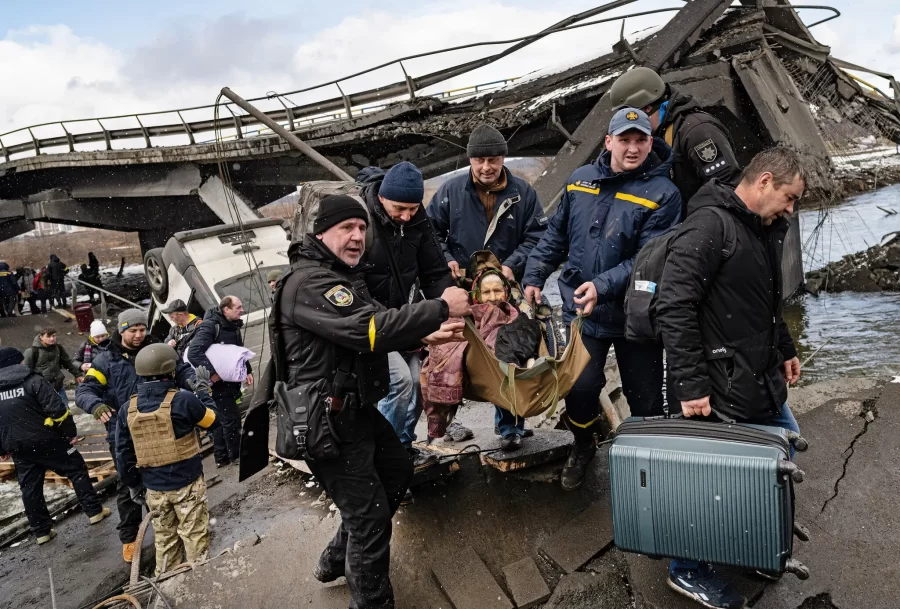Beat by beat: Ukraine
On February 24, 2022 Russian troops crossed the border between Ukraine and Russia on an order from Russian president Valdimier Putin. Heavy sanctions enacted on February 27th by western powers began to tank the Russian economy and effectively slow their assault on Ukraine. The Biden administration states that US troops will not be deployed to openly attack Russian forces in a frontal warfare. Protests from all across Russia have broken out in violent riots. Two days after the initial attack on Ukraine, 1,800 protesters were arrested across Russia. As this conflict continues to unravel, uncertainty on how this event will end adds nerve to political figures and citizens of the world.
The Ukraine-Russia war started on February 24th, 2022. This was the day that Russian troops crossed the border between Russia and Ukraine. Shells exploded on the country and near the city of Kyiv with promises of more from Putin if Ukraine does not back down. This action is widely condemned around the world, as Russian athletes have been boycotted as well as Russian exports.
History of Ukraine, Russia and NATO
Many people are still confused about the circumstances that have started this whole debacle. Ukraine is the second largest country in Europe, behind Russia. In order to understand the relationship between the two countries, it’s imperative to know that Ukraine was a former member of the Russian empire. Ukraine was ruled by several powers throughout history including Austria, Hungary, the Ottoman empire, and the Tsar of Russia. In the wake of the Russian revolution, Ukraine finally had the advantage of a weakened government to formally separate from the Russian empire. But unfortunately, this victory was short lived and stamped out by the Soviet Union in 1922. During this era, Ukraine became the one of the most populous and industrialized republics in all of the Soviet Union. This was a vital asset to the Soviet Union as their entire economy relied on industrialism. However, Russia lost Ukraine once more in 1991 in wake of the fall of the Soviet Union. This sovereign nation, that has been ruled continuously over and over by major powers, was now finally free to be its own country. Ukraine began to join NATO in 1992 and lived in sovereignty until 2014. Former president of Ukraine, Viktor Fanukovych, pulled out of the NATO agreement on the basis of wanting to stay a non-aliment status. Protests sparked in dispute of the decision that ousted Fanukovych from power. This “Revolution of Dignity” created a new form of government that annexed Russia from Crimea. In recent years, at the 2021 NATO summit, Ukraine opted to join NATO once more. However, Russia vetoed the movement; while not uncommon it would seem that Russia did not want another NATO ally on his border. If Ukraine became formal members of NATO, then it would have been impossible to take over Ukraine again. . Many believe this to be the reason behind the invasion by the Russian government.
There are many things that are unknown in this story because of its ongoing nature. Despite this, experts believe that Russia’s strategy was to capture key airports and coastal control. On March 9th however, it is clear that Russia was not only focusing on military targets a a maternety hospital was bombed by Russian missiles. Russian attacks are still happening live and uncertainty is at an all time high.

Hello there, my name is Devon Beechley and I am a senior at Lincoln East. I’ve been here for four years and have been around to almost everything that...



